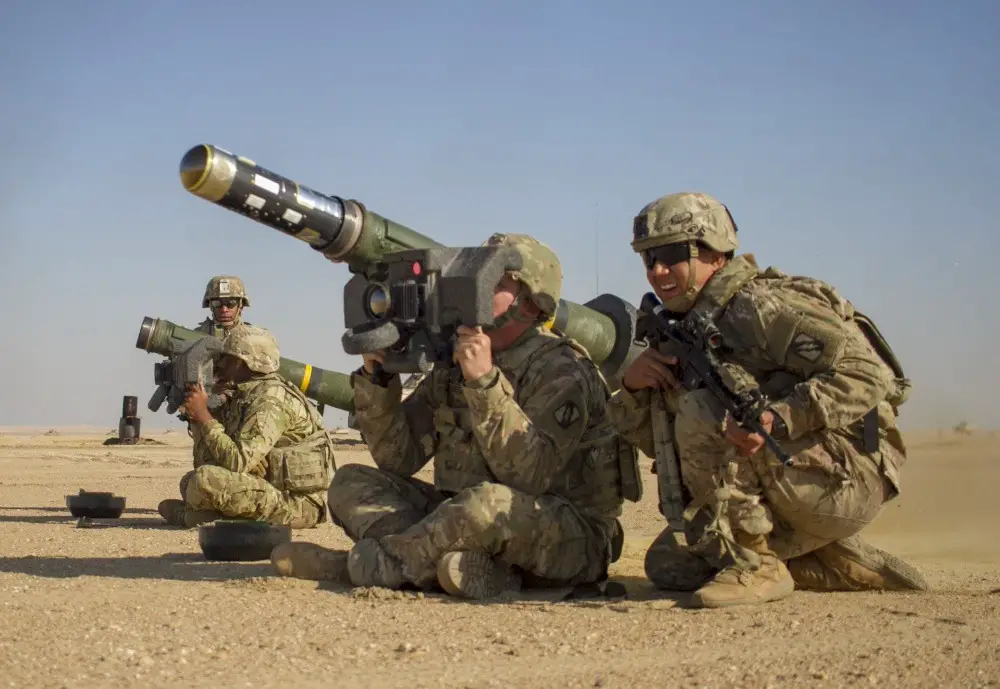The U.S. State Department has made a determination approving a possible Foreign Military Sale (FMS) to the Government of Brazil of Javelin Anti-tank Missiles and related equipment for an estimated cost of up to $74 million. The Government of Brazil has requested to buy up to two hundred twenty-two (222) Javelin anti-tank guided missiles, FGM-148; and thirty-three (33) Javelin Command Launch Units (CLU). Also included are Enhanced Producibility Basic Skills Trainers; missile simulation rounds; Security Assistance Management Directorate technical assistance; Tactical Aviation and Ground Munitions Project Office technical assistance. The prime contractors will be Raytheon/Lockheed Martin Javelin Joint Venture, Orlando, FL, and Tucson, AZ.
The FGM-148 Javelin, or Advanced Anti-Tank Weapon System-Medium (AAWS-M), is an American-made portable anti-tank missile system in service since 1996, and continuously upgraded. It replaced the M47 Dragon anti-tank missile in US service. Its fire-and-forget design uses automatic infrared guidance that allows the user to seek cover immediately after launch, in contrast to wire-guided systems, like the system used by the Dragon, which require a user to guide the weapon throughout the engagement. The Javelin’s high-explosive anti-tank (HEAT) warhead can defeat modern tanks by top attack, hitting them from above, where their armor is thinnest, and is also useful against fortifications in a direct attack flight. As of 2019, the Javelin had been used in around 5,000 successful engagements.

The FGM-148 Javelin is a fire-and-forget missile with lock-on before launch and automatic self-guidance. The system takes a top attack flight profile against armored vehicles, attacking the usually thinner top armor, but can also make a direct attack, for use against buildings, targets too close for top attack, targets under obstructions and helicopters. It can reach a peak altitude of 150 m (490 ft) in top attack mode and 60 m (200 ft) in direct attack mode. Initial versions had a range of 2,000 m (6,600 ft), later increased to 2,500 m (8,200 ft). It is equipped with an imaging infrared seeker. The tandem warhead is fitted with two shaped charges: a precursor warhead to detonate any explosive reactive armor and a primary warhead to penetrate base armor.
The system consists of three main components: the Command Launch Unit, the Launch Tube Assembly and the missile itself. The gunner carries a reusable Command Launch Unit, more commonly referred to as a CLU (pronounced “clue”), which is the targeting component of the two-part system. The CLU has three views which are used to find, target, and fire the missile and may also be used separately from the missile as a portable thermal sight. Infantry are no longer required to stay in constant contact with armored personnel carriers and tanks with thermal sights. This makes infantry personnel more flexible and able to perceive threats they would not otherwise be able to detect. Both the gunner and the ammunition bearer carry the Launch Tube Assembly, a disposable tube that houses the missile and protects the missile from harsh environments. The tube has built-in electronics and a locking hinge system that makes attachment and detachment of the missile to and from the Command Launch Unit a quick and simple process.















